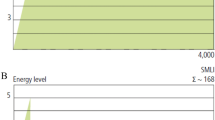Abstract
Shock wave lithotripsy (SWL) has made a revolution in the treatment of urolithiasis. Recent reports suggesting that stone features for SWL have changed during the last years have forced us to compare our initial and last 250 patients treated at our ESWL unit in terms of stone and patient characteristics. We found that the number of ureteric stones and small calyceal stones have increased significantly with time whereas the number of larger stones undergoing SWL has decreased significantly. We believe that this change in stone features is caused by the changing trends in the treatment of stone disease by incorporating other therapeutic options and modifying the SWL indications according to patient characteristics. We also believe that prophylactic lithotripsy for asymptomatic calyceal stones still remains to be a debatable issue.
Similar content being viewed by others
References
Chaussy, C. H., Brendel, W., Schmiedt, E.: Extracorporeally induced destruction of kidney stones by shock waves.Lancet, 2, 1265 (1980).
Chaussy, C. H., Schmiedt, E., Jocham, D., Brendel, W., Forssmann, B., Walther, V.: First clinical experience with extracorporeally induced destruction of kidney stones by shock waves.J. Urol., 127, 417 (1982).
Assimos, D. G., Boyce, W. H., Harrison, L. H., McCullough, D. L., Kroovand, R. L., Sweat K. R.: Role of open surgery since extracorporeal shock wave lithotripsy.J. Urol., 142, 263 (1989).
Boyle, E. T., Segura, J. W., Patterson, D. E., Le Roy, A. J., Rochester, M. N.: The role of open stone surgery in stone disease.J. Urol., 141, 293 (1989).
Descant, N., Thomas, R.: Are criteria for shock wave lithotripsy (SWL) changing in United States?J. Urol., 149, 365A. AUA 88. Annual Meeting, May 15–20, 1993.
Ilker, Y., Alican, Y., Şimşek, F., Türkeri, L. N., Akdaş, A.: Extracorporeal shock wave lithotripsy monotherapy of staghorn calculi with Dornier MFL 5000.J. Endourol., 7, 281 (1993).
Cass, A. S.: Changing pattern of stone treatment by extracorporeal shock wave lithotripsy. 11th World Congress on Endourology and ESWL, October 20–23, 1993, p. XVI-1.
Hübner, W., Porpaczy, P.: Treatment of caliceal calculi.Br.J. Urol., 66, 9 (1990).
Glowacki, L. S., Beecroft, M. L., Cook, R. J., Pahl, D., Churchill, D. N.: The natural history of asymptomatic urolithiasis.J. Urol., 147, 319 (1992).
Lam, H. S., Lingeman, J. E., Mosbaugh, P. G., Steele, R. E., Knapp, P. M., Scott, J. W., Newman, D. M.: Evolution of the technique of combination therapy for staghorn calculi: A decreasing role for extracorporeal shock wave lithotripsy.J. Urol., 148, 1058 (1992).
Lingeman, J. E.: Staghorn calculi: Percutaneous versus ESWL treatment.Prob. Urol., 6, 346 (1992).
Author information
Authors and Affiliations
Rights and permissions
About this article
Cite this article
Ilker, Y., Tarcan, T., Şimşek, F. et al. Changing patient and stone features for shock wave lithotripsy (SWL) in Turkey. International Urology and Nephrology 27, 663–668 (1995). https://doi.org/10.1007/BF02552129
Accepted:
Issue Date:
DOI: https://doi.org/10.1007/BF02552129




